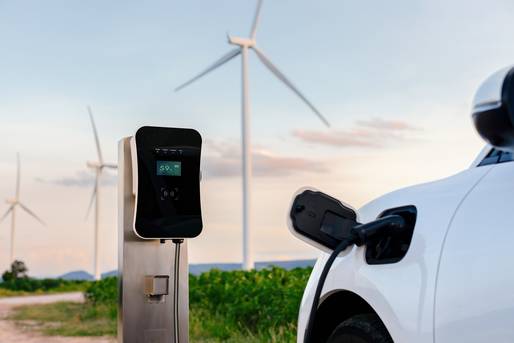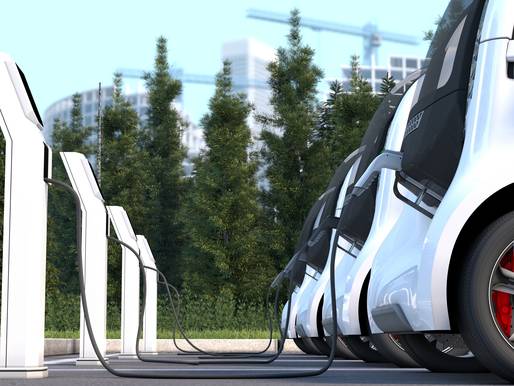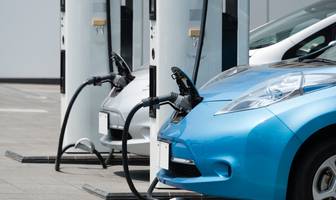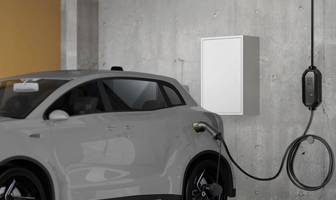Electromobility - climate-friendly solution for the mobility of the future
Updated: 08.07.2024 | Reading Time: 6 minutes
This text is machine translated.
Electromobility has become increasingly important in recent years. This is not only due to rising fuel prices. Many people are concerned about the environment and are looking for a sustainable way of getting around. The trend towards electric vehicles will continue in 2024 and is revolutionizing our understanding of mobility.
However, not only private individuals, but also companies are equipping their fleets with electric cars. This is because, on the one hand, electric vehicles offer significant tax advantages and, on the other, clever fleet managers are also convinced by the comparatively low maintenance costs of the vehicles. We would be happy to provide you with more interesting information on the subject of electromobility.
The term electromobility or e-mobility is used whenever electric drives are used for transportation.
The size and type of vehicle do not play a significant role here. This is why the spectrum of electromobility ranges from small e-scooters for the city to electrically powered cars, trucks and buses.
But electrically powered trains and streetcars are also included when we talk about e-mobility. Essentially, electromobility is about using electrical energy from batteries or fuel cells instead of fossil fuels.
The electric vehicles used for this purpose can be divided into three categories:
Battery electric vehicles
These vehicles are equipped with a battery and at least one electric motor. While driving, the electric motor is supplied with electrical energy from the battery. If the battery is empty, it must be recharged at a socket or charging station.
Hybrid vehicles
Hybrid vehicles combine a conventional combustion engine and a modern electric motor. Depending on the design, the engines work separately or simultaneously while driving, or the combustion engine can charge the vehicle battery with the help of a generator.
Fuel cell vehicles
Vehicles with fuel cell technology have an electric motor that draws its power from a fuel cell installed in the vehicle. The fuel cell requires hydrogen to generate electricity, which must be carried in a special vehicle tank.
In the field of mobility, current concepts are inevitably reaching their limits. This is because there are already well over 1.3 billion vehicles on the road worldwide. Of these, around one billion vehicles are used as passenger cars. According to the German Federal Ministry for the Environment, Nature Conservation, Nuclear Safety and Consumer Protection (BMUV), around two billion vehicles are expected to be in use worldwide by 2035.
Die dabei entstehenden Emissionen stellen nicht nur in den Städten weltweit ein großes Problem dar. Durch den Straßenverkehr entsteht der Großteil der transportbedingten Luftschadstoffbelastungen, die nicht unerheblich zur Klimaerwärmung beitragen.
Verschärft wird das Problem durch die immer knapper werdenden fossilen Brennstoffe und die damit einhergehende Abhängigkeit von Importen. Weil jedoch viele Menschen auf das Auto angewiesen sind, muss nach brauchbaren Alternativen gesucht werden.
Elektrisch betriebene Fahrzeuge stellen mittlerweile eine klimaneutrale und umweltfreundliche Alternative zu den Verbrennungsmotoren dar. Besonders dann, wenn der Strom aus regenerativen Quellen wie Wasser, Wind oder Solar gewonnen wird.
In order to promote electric mobility in Germany, the Federal Ministry for Digital and Transport Affairs (BMDV) has launched the Electric Mobility Act (EmoG) together with the Federal Ministry for the Environment, Nature Conservation, Nuclear Safety and Consumer Protection (BMUV).
The law, which came into force on June 12, 2015, enables municipalities to grant special privileges to electrically powered vehicles. These include, for example, exemptions from access restrictions, the reduction or waiver of parking fees or the allocation of special parking spaces at charging stations.
Decisions on the respective privileges are made by the local authorities. For easier identification, electric vehicles are equipped with a special license plate, the e-license plate. The last progress report by the BMDV and BMUV from 2020 showed that the implementation of the Electric Mobility Act is having a positive impact on electric mobility.
Despite the many support measures, the electric car still has a comparatively difficult time in Germany. Although the number of new registrations is growing steadily, many people still can't really imagine saying goodbye to their beloved combustion engine. Yet electric vehicles have numerous advantages:
Save resources
Even if experts disagree on the timing, fossil fuel reserves are finite and will definitely run out in the near future. Although consumption in the industrialized nations is declining, emerging countries are developing an ever-increasing demand for oil, which means that global consumption is constantly rising.
Electric vehicles, on the other hand, run on electricity and can be powered by renewable energies such as solar or wind energy, which helps to reduce dependence on limited fossil fuels such as crude oil. If you have even installed your own charging station at home, you are not only helping to protect the environment, but also saving money - provided the electricity comes from your own solar system.
No climate impact due to CO2
When oil or oil products are burned, the greenhouse gas carbon dioxide (CO2) is produced alongside other pollutants, which is considered to be the main cause of dramatic climate change. Added to this are the massive environmental problems caused by the extraction, transportation and processing of crude oil.
Electric cars, on the other hand, do not emit harmful exhaust gases such as carbon dioxide, nitrogen oxides (NOx) and particulate matter and therefore help to reduce CO2 emissions and improve air quality. Especially when powered by renewable energy, electric cars are an environmentally friendly alternative to conventional vehicles with combustion engines.
Technological progress
The technical development of electric motors and the associated control systems has made huge progress in recent years. In combination with lithium-ion batteries, electric vehicles are extremely powerful and have practical ranges.
Irrespective of this, research into new innovative drive and battery technologies is ongoing in order to achieve greater efficiency and a lower CO2 footprint. In general, electromobility promotes technological progress in the entire automotive industry, as the development of powerful motors, batteries and charging systems drives innovation. In addition, electric vehicles enable advanced connectivity features, including wireless updates and integration with smart networks. This technological advancement can help improve vehicle performance, safety and user experience.
Economic advantages
The increase in electromobility also brings numerous economic benefits. For example, the general public can benefit from the development of an electric vehicle industry, as new jobs need to be created in areas such as battery production, electronics and charging technology.
In addition, the promotion of electromobility strengthens the local economy and reduces dependence on imported fossil fuels. But private individuals also benefit: as operating costs are generally lower compared to conventional vehicles with combustion engines, electric vehicles are significantly more cost-efficient in the long term. They also generally require less maintenance and are more reliable than conventional cars, as they have fewer moving parts. They can also be used to store surplus energy and feed it back into the grid when needed.
In the case of a car with a combustion engine, the technical documentation states exactly what the vehicle's emission values are. In the field of e-mobility, on the other hand, there are a large number of reports and reports in which different statements cause confusion.
The fact is that an electric car does not emit any greenhouse gases during operation. However, electric vehicles require electricity for charging, some of which is generated by conventional power plants. As a result, emissions from electric mobility are upstream. But only if the electricity does not come from renewable sources.
Fortunately, however, the share of renewable energies is continuously increasing. According to an official statement by the German government, the share of renewable energies in gross electricity consumption exceeded 50% for the first time in 2023.
However, the electricity mix can vary depending on the region and time of day. As a result, electric vehicles are only as clean as the electricity used to power them.
Irrespective of this, critics of electromobility tirelessly point out the pollutant emissions produced during the manufacture of an electric vehicle. Due to the battery, these are significantly higher than for vehicles with a conventional combustion engine. Although this is basically true, the emissions of an electric vehicle are significantly lower during the use phase. This results in lower carbon dioxide emissions over the entire life cycle.
Electric cars are not a panacea when it comes to future mobility. This is because electric cars do not necessarily help to drastically reduce the volume of traffic on the roads. Nor do electric cars help to solve the parking problem in cities. Opponents of electromobility also like to point out that the range per battery charge is too short, that the public charging infrastructure is inadequate and that charging times are quite long in some places.
However, if you look at global sales of electric cars, the trend away from the combustion engine and towards electric drives is unbroken. The Federal Environment Agency (UBA) predicts that around 10 million electric cars will be in use in Germany by 2030.
In order to achieve the target of around 15 million electric cars set by the German government, an application for a subsidy could be submitted by December 17, 2023. With the so-called environmental bonus, the purchase or leasing of an electric car was subsidized with up to €4,500.
Even if the demand for electric cars in Germany was no longer quite as high at the beginning of 2024 due to the discontinuation of the purchase premium (environmental bonus), this will not change the trend towards electromobility.
This is because consumers are becoming increasingly aware of environmental protection and sustainability. The parallel expansion of renewable energies and public charging infrastructure is also driving this development. If Europe is to be independent of fossil fuel imports in the long term, there is no way around electromobility.













